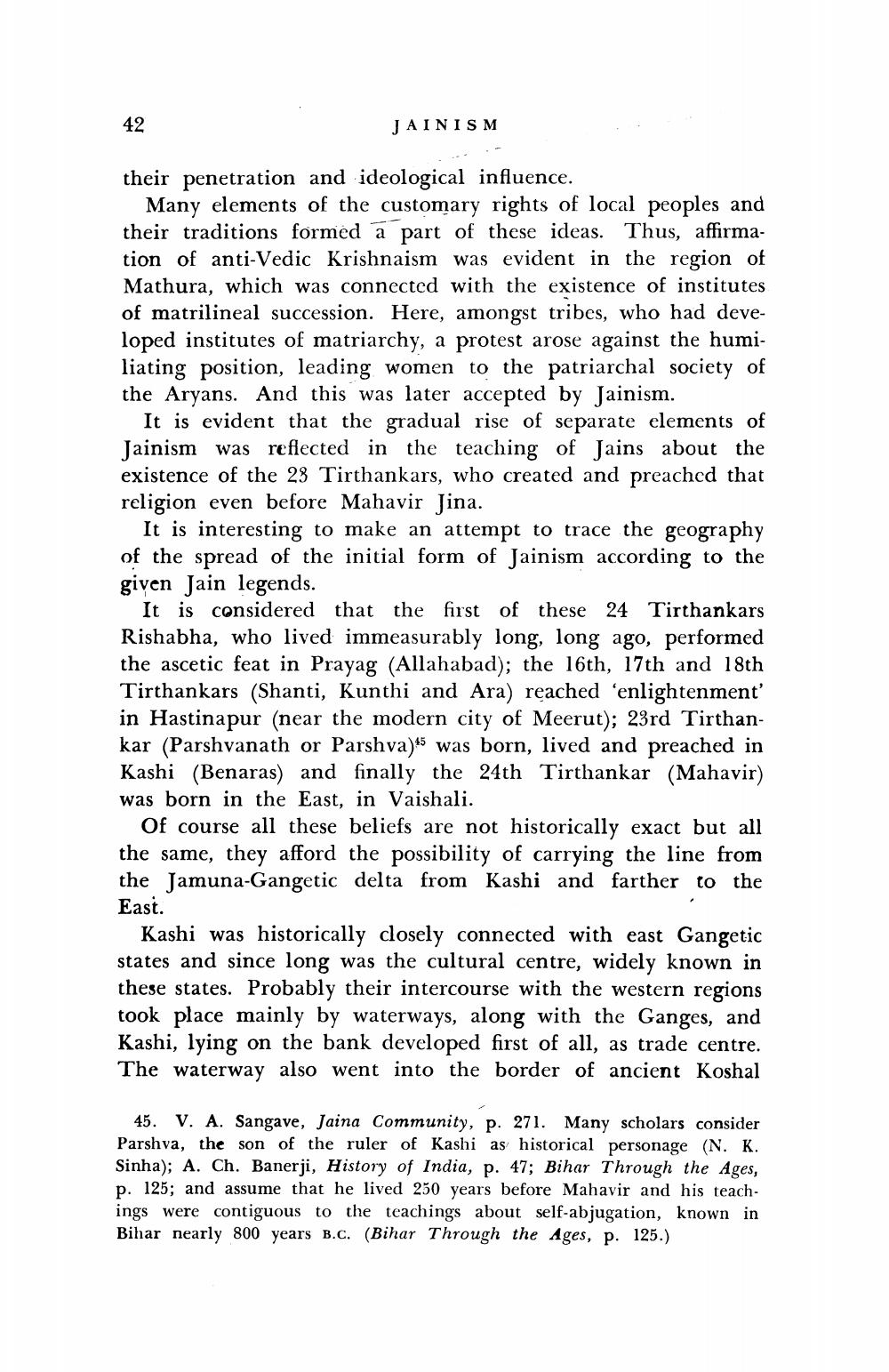________________
42
JAINISM
their penetration and ideological influence.
Many elements of the customary rights of local peoples and their traditions formed a part of these ideas. Thus, affirmation of anti-Vedic Krishnaism was evident in the region of Mathura, which was connected with the existence of institutes of matrilineal succession. Here, amongst tribes, who had developed institutes of matriarchy, a protest arose against the humiliating position, leading women to the patriarchal society of the Aryans. And this was later accepted by Jainism.
It is evident that the gradual rise of separate elements of Jainism was reflected in the teaching of Jains about the existence of the 28 Tirthankars, who created and preached that religion even before Mahavir Jina.
It is interesting to make an attempt to trace the geography of the spread of the initial form of Jainism according to the given Jain legends.
It is considered that the first of these 24 Tirthankars Rishabha, who lived immeasurably long, long ago, performed the ascetic feat in Prayag (Allahabad); the 16th, 17th and 18th Tirthankars (Shanti, Kunthi and Ara) reached ‘enlightenment' in Hastinapur (near the modern city of Meerut); 23rd Tirthan kar (Parshvanath or Parshva)* was born, lived and preached in Kashi (Benaras) and finally the 24th Tirthankar (Mahavir) was born in the East, in Vaishali.
Of course all these beliefs are not historically exact but all the same, they afford the possibility of carrying the line from the Jamuna-Gangetic delta from Kashi and farther to the East.
Kashi was historically closely connected with east Gangetic states and since long was the cultural centre, widely known in these states. Probably their intercourse with the western regions took place mainly by waterways, along with the Ganges. and Kashi, lying on the bank developed first of all, as trade centre. The waterway also went into the border of ancient Koshal
45. V. A. Sangave, Jaina Community, p. 271. Many scholars consider Parshva, the son of the ruler of Kashi as historical personage (N. K. Sinha); A. Ch. Banerji, History of India, p. 47; Bihar Through the Ages, p. 125; and assume that he lived 250 years before Mahavir and his teachings were contiguous to the teachings about self-abjugation, known in Bihar nearly 800 years B.C. (Bihar Through the Ages, p. 125.)




